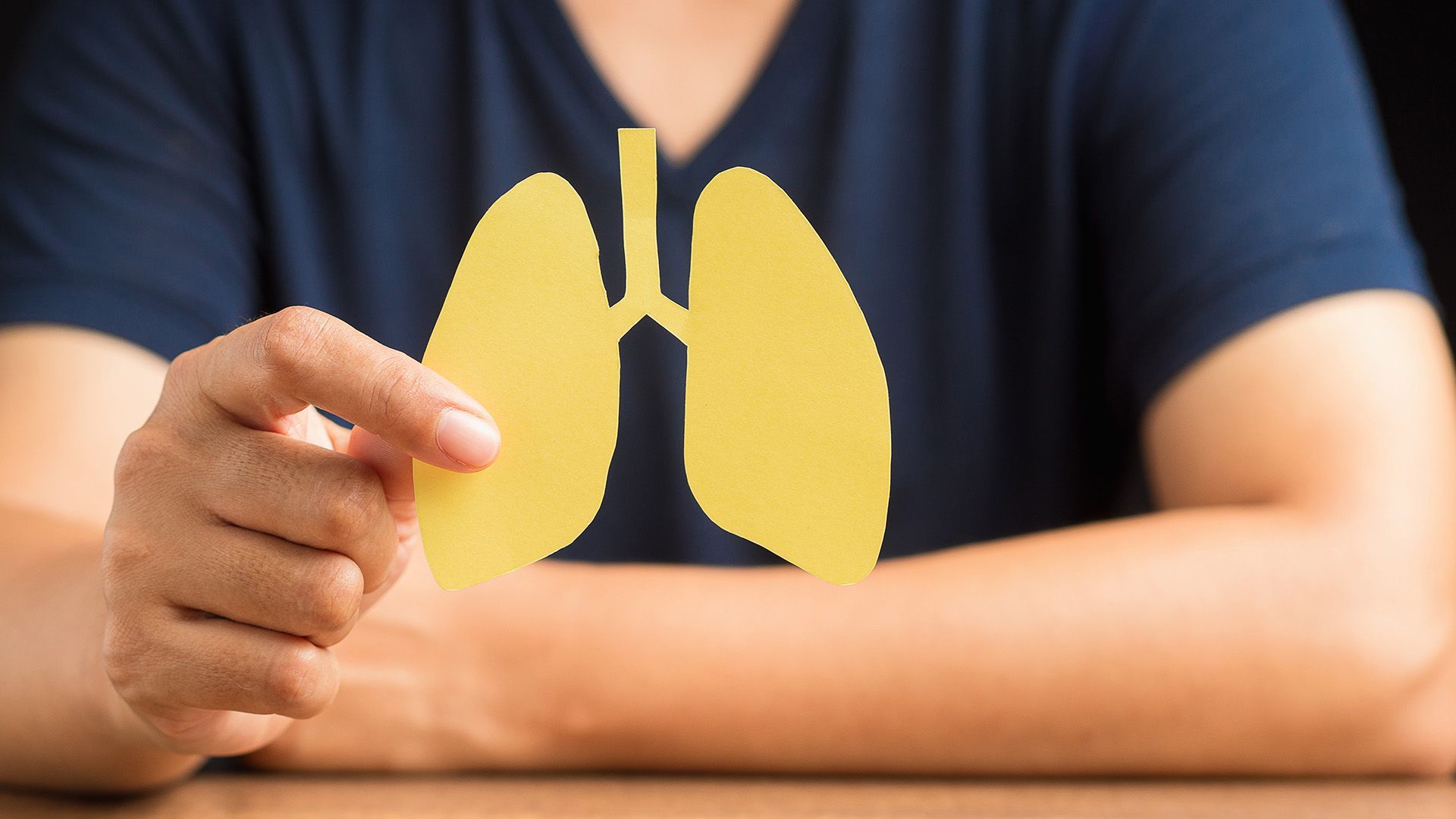Scarring of the lungs can be treated if detected early
Exposure to bird droppings, asbestos or smoking can increase risk
Past lung infections, autoimmune diseases and prolonged exposure to small particles like dust, smoke, asbestos – commonly used in building materials up until the 1980s – feathers or bird droppings, can cause scarring in the lungs. With medical advances, there is now new hope for people living with pulmonary fibrosis, particularly if the condition is identified early.
“Pulmonary fibrosis means scarring of the lungs. Over time, normal, healthy lung tissue that is soft, stretchy, and sponge-like to help us absorb oxygen, is gradually replaced by scar tissue, which makes the lungs stiff and thick,” explains Dr Shikar Mothilal, a specialist physician sub-specialising in respiratory medicine who practises at Netcare Christiaan Barnard Memorial Hospital.
“When this happens, the scar tissue prevents your lungs from expanding properly. They hold less air, and oxygen has trouble passing into the bloodstream when you breathe. It’s essential to recognise that although pulmonary fibrosis often begins slowly, it worsens over time. It is not contagious, and so it can’t be passed from one person to another, and the rate of progression also varies from person to person.”

Dr Shikar Mothilal
Symptoms
Early signs
- Shortness of breath that starts mildly when walking fast or climbing stairs and progresses to daily activities, such as dressing or showering.
- Often described as feeling like “my lungs just can’t keep up”
- Chronic cough that’s often dry or sometimes productive
- Persistent, hacking cough that doesn’t produce much phlegm
- May worsen with talking, laughing, or exertion
Advanced signs
- Fatigue and low stamina, a constant feeling of “running on empty”, are tied to low oxygen delivery and the extra effort needed to breathe
- Unexplained weight loss due to high energy use and reduced appetite
- Muscle and joint aches, especially if linked to autoimmune causes
“Notably, symptoms of pulmonary fibrosis usually start subtly and progress slowly. Fatigue, weight loss, and signs of low oxygen such as finger clubbing — a swelling and rounding of the fingertips — appear as the disease advances,” Dr Mothilal explains.
It’s essential to recognise that pulmonary fibrosis refers to lung scarring resulting from various causes and is therefore not a singular, specific disease. There are multiple causes that may lead to the development of pulmonary fibrosis, and often the particular trigger is unknown – this is called idiopathic pulmonary fibrosis (IPF).
“This type of pulmonary fibrosis is more common in men, although women are increasingly affected. People over the age of 50 are also at higher risk. It is believed to involve genetics with an abnormal healing response, where the body ‘over-repairs’ minor injuries in the lungs by producing excess scar tissue,” Dr Mothilal says.
“The development of fibrosis in the lungs can also be secondary due to autoimmune and connective tissue diseases, where the body’s immune system mistakenly attacks the lungs, leaving scars and reducing a person’s ability to breathe over time. Conditions that could cause this include rheumatoid arthritis, scleroderma, lupus and Sjögren’s syndrome, among others,” Dr Mothilal says.
Long-term exposure to irritants like pollution, acid reflux, and workplace dust can silently damage lung tissue over time. While smoking remains a key culprit, substances like asbestos and silica dust—common in certain industries—also pose serious threats, underscoring the importance of protective measures and early detection.
“Other common environmental factors include coal dust, tiny particles of sawdust, grains or metals. Exposure to mould and animal proteins, notably bird excrement or feathers, may cause forms of hypersensitivity pneumonitis that can lead to scarring, depriving the body of vital oxygen if left untreated. Farmers, bird breeders, or those who keep or handle poultry may be especially at risk.
Long term use or high dosages of certain medications, forms of chemotherapy or radiation therapy may increase the chances of a person developing pulmonary fibrosis.
“Although there are some risk factors that we can’t control, such as our genes, there are things we can do to help reduce our risk for pulmonary fibrosis. Smoking is the most critical modifiable risk factor, as smokers are at significantly higher risk of pulmonary fibrosis and faster disease progression. Avoiding triggers and exposure to irritants is also crucial.”
The good news is that with awareness and close medical follow-up, it is possible to reduce risk and better manage fibrosis if needed. “Pulmonary fibrosis isn’t curable yet, but treatments and lifestyle steps can help slow it down and improve quality of life for those affected. It’s vital to treat any underlying causes. Antifibrotic therapies can slow the rate of scarring, and while they don’t reverse the damage, these can buy time by reducing how quickly the lung tissue stiffens,” he says.
Palliative and supportive care can be integrated early alongside active treatment. “Palliative care in this context is not end-of-life care; rather, the aim is improving comfort, symptom control, and life quality,” Dr Mothilal emphasises.
“If oxygen saturation is low, oxygen therapy helps provide more ‘fuel’ for the body to reduce shortness of breath and fatigue while also improving sleep and protecting vital organs. The availability of portable devices means that people with fairly advanced fibrosis can travel and stay active. There is a persistent myth that in the presence of hypoxia, or low oxygen saturation, supplemental oxygen will be addictive or that inhalers or nebulisers may be addictive and weaken the lungs. This is untrue,” he says.
“Pulmonary rehabilitation, including a structured programme of exercise training, breathing techniques, education, physiotherapy and healthy nutrition, can make the most of remaining lung function and improve quality of life. For advanced disease when other treatments no longer help, a lung transplant may be an option for selected patients. This is not for everyone, but for the right person, it can potentially add years of better quality to their life.”
“Pulmonary fibrosis is not a normal part of ageing, and there is often much that we can do. Early recognition and proactive care make a huge difference. Support networks – from doctors to family to peer support groups – are crucial. Medicine has already shifted from having ‘nothing to offer’ patients to medications that slow scarring and transplants that can extend life. Ongoing research is a source of even more hope for the future,” Dr Mothilal concludes.













